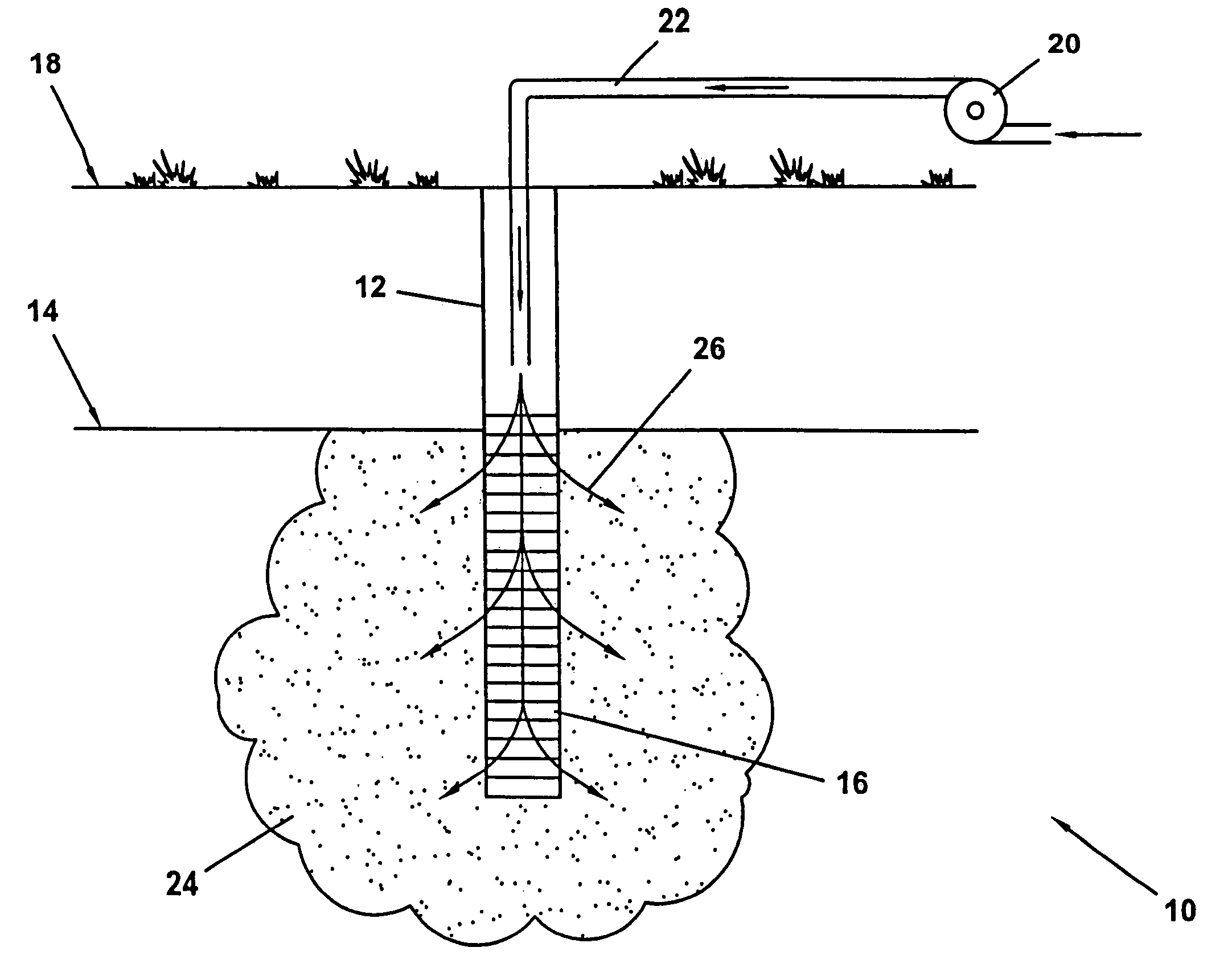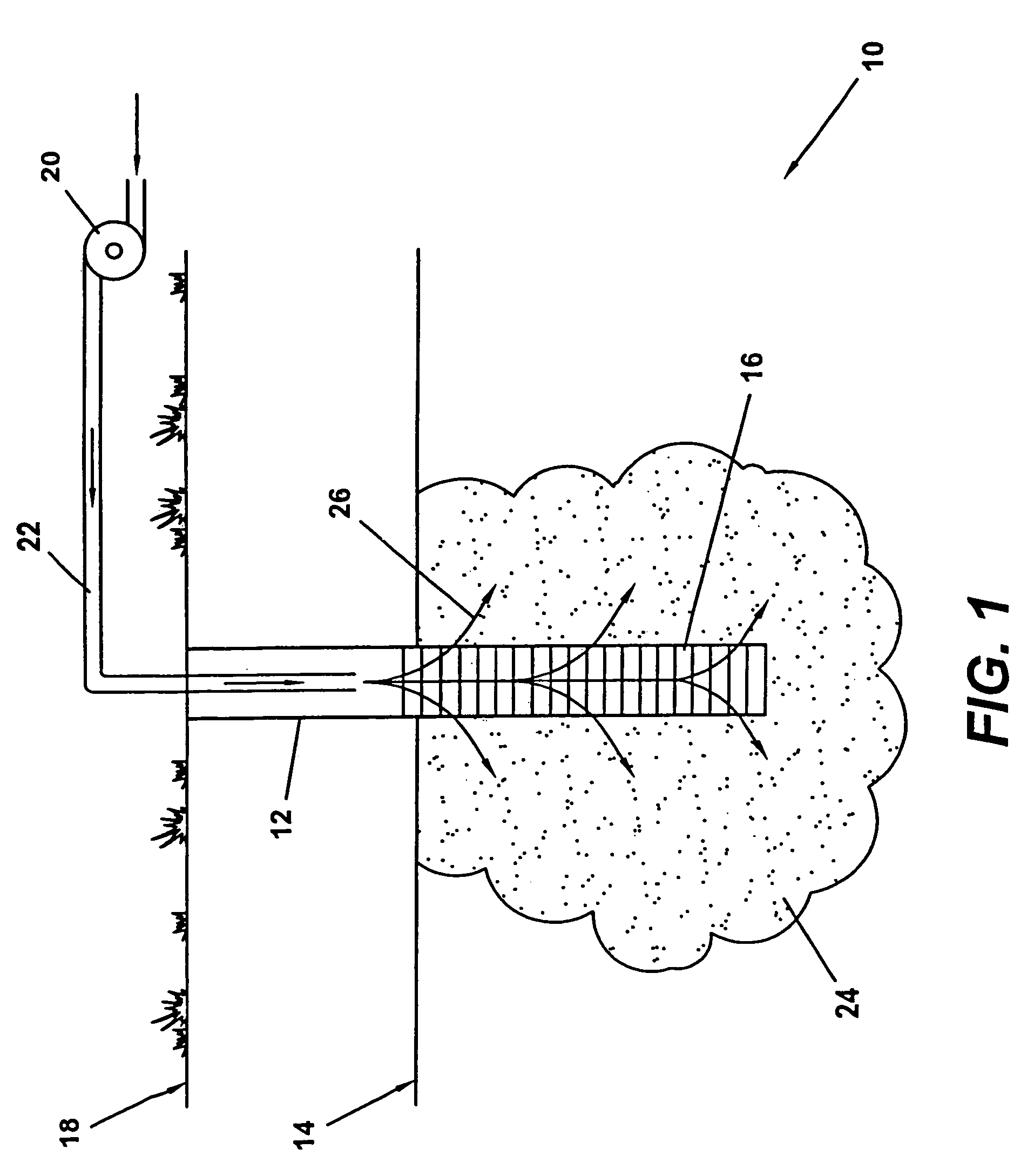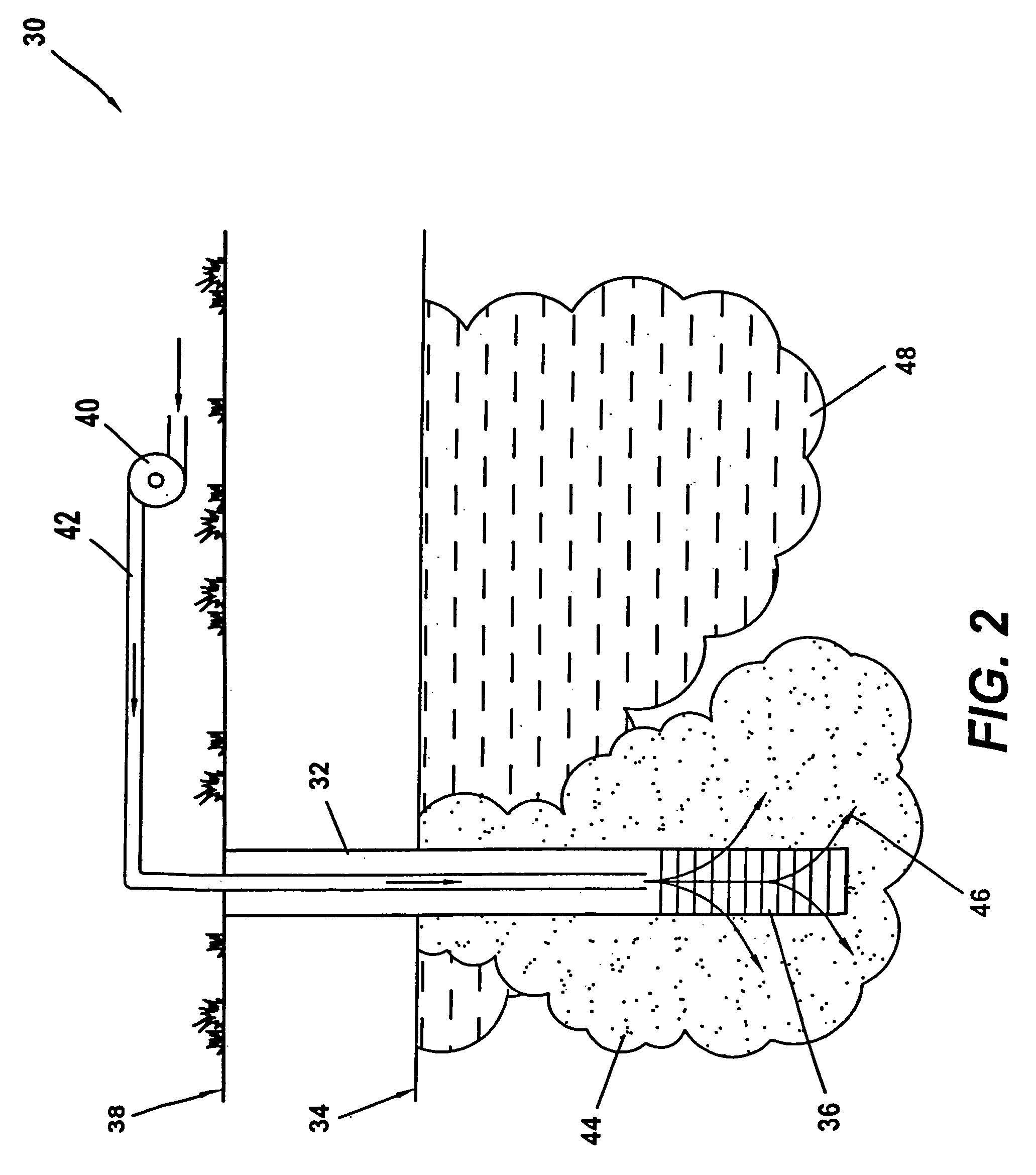Method of making and using nanoscale metal
a nano-scale metal and metal alloy technology, applied in the field of making and using nano-scale metals, can solve the problems of lack of nano-scale metallic colloids, complex process, and unpractical full-scale application of technology, and achieve the effect of increasing hydrogen production rate and same or greater reactivity
- Summary
- Abstract
- Description
- Claims
- Application Information
AI Technical Summary
Benefits of technology
Problems solved by technology
Method used
Image
Examples
Embodiment Construction
[0096]FIG. 1 illustrates a method of the present invention 10 for injecting the nanoscale metal 26 of the present invention by pump 20 through an injector 22 into an open bore hole 12 through a screen 16 into a plume 24 that is located beneath ground level 18 and beneath the water table 14.
[0097]FIG. 2 illustrates another method of the present invention 30 for injecting the nanoscale metal 46 of the present invention by pump 40 through an injector 42 into an open bore hole 32 through a screen 36 into a plume 44 that is located beneath ground level 38 and beneath the water table 34. Non-contaminated water 48 beneath the water table is also illustrated.
[0098]FIG. 3 shows another embodiment of a method of the present invention 50 for injecting nanoscale metal 68 of the present invention through an injector 62 through a screen 52 into a plume 64 that is located beneath ground level 58 and above or near the water table 54 with the use of an auger 66 for mixing the soil and a dust or vapo...
PUM
 Login to View More
Login to View More Abstract
Description
Claims
Application Information
 Login to View More
Login to View More - R&D Engineer
- R&D Manager
- IP Professional
- Industry Leading Data Capabilities
- Powerful AI technology
- Patent DNA Extraction
Browse by: Latest US Patents, China's latest patents, Technical Efficacy Thesaurus, Application Domain, Technology Topic, Popular Technical Reports.
© 2024 PatSnap. All rights reserved.Legal|Privacy policy|Modern Slavery Act Transparency Statement|Sitemap|About US| Contact US: help@patsnap.com










